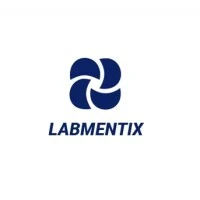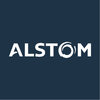Filter interviews by
Labmentix Interview Questions and Answers
100 Interview questions
Dynamic programming is a method for solving complex problems by breaking them down into simpler subproblems and storing their solutions.
Dynamic programming is used in optimization problems, such as the Knapsack problem.
It involves two main approaches: top-down (memoization) and bottom-up (tabulation).
An example is calculating Fibonacci numbers efficiently using dynamic programming.
Dynamic programming is applicable...
Power BI, MS Excel, and SQL are essential tools for data analysis, enabling visualization, manipulation, and querying of data.
Power BI: Used for creating interactive dashboards and visual reports. Example: Visualizing sales data trends over time.
MS Excel: Ideal for data manipulation and basic analysis. Example: Using pivot tables to summarize survey results.
SQL: Essential for querying databases and managing large ...
Data science is the interdisciplinary field that uses scientific methods, algorithms, and systems to extract knowledge from data.
Combines statistics, computer science, and domain expertise.
Involves data collection, cleaning, analysis, and visualization.
Uses machine learning to make predictions, e.g., predicting customer churn.
Applies data-driven decision-making in various industries, like finance and healthcare.
Ut...
Data analytics can be categorized into four main types: descriptive, diagnostic, predictive, and prescriptive analytics.
Descriptive Analytics: Summarizes historical data to understand trends (e.g., sales reports).
Diagnostic Analytics: Investigates past performance to determine causes (e.g., analyzing why sales dropped).
Predictive Analytics: Uses statistical models to forecast future outcomes (e.g., predicting cust...
I have been working on a RESTful API for a task management application, focusing on user authentication and task CRUD operations.
Implemented user authentication using JWT for secure access.
Developed endpoints for creating, reading, updating, and deleting tasks.
Utilized Express.js for server-side logic and routing.
Integrated MongoDB for data storage and retrieval.
Ensured API documentation using Swagger for easy ref...
Exploratory Data Analysis (EDA) is a critical step in data analysis that involves summarizing and visualizing datasets to uncover patterns.
EDA helps in understanding the underlying structure of the data.
It involves visualizations like histograms, box plots, and scatter plots to identify trends.
For example, using a box plot to detect outliers in a dataset.
EDA can reveal correlations between variables, aiding in fea...
Python offers several powerful libraries for data visualization, enabling effective data representation and insights extraction.
Matplotlib: A foundational library for creating static, animated, and interactive visualizations in Python. Example: plt.plot(x, y)
Seaborn: Built on Matplotlib, it provides a high-level interface for drawing attractive statistical graphics. Example: sns.scatterplot(data=df, x='x', y='y')
P...
Seaborn is a Python data visualization library based on Matplotlib, providing a high-level interface for drawing attractive statistical graphics.
Built on top of Matplotlib, Seaborn simplifies complex visualizations.
Offers built-in themes for styling Matplotlib graphics, e.g., 'darkgrid'.
Supports visualizing statistical relationships, e.g., scatter plots with regression lines.
Easily creates heatmaps for correlation...
Python data refers to the various types of data structures and types used in Python programming for storing and manipulating information.
Python has built-in data types like int, float, str, and bool.
Data structures include lists (e.g., [1, 2, 3]), tuples (e.g., (1, 2, 3)), and dictionaries (e.g., {'key': 'value'}).
Python supports complex data types like sets (e.g., {1, 2, 3}) and user-defined classes.
Data can be m...
Metadata is data that provides information about other data, enhancing its context and usability.
Metadata can describe the content, quality, condition, and other characteristics of data.
Examples include file size, author, and creation date for documents.
In databases, metadata defines the structure of data, such as table names and data types.
In web pages, metadata can include keywords and descriptions for search en...
Labmentix Interview Experiences
158 interviews found
I appeared for an interview in Jun 2025, where I was asked the following questions.
- Q1. What projects did you work on during your internship?
- Ans.
During my internship, I worked on various web development projects, enhancing my skills in front-end and back-end technologies.
Developed a responsive e-commerce website using React and Node.js, improving user experience and increasing sales by 20%.
Collaborated on a team project to create a blog platform with user authentication, utilizing MongoDB for data storage.
Implemented RESTful APIs for a mobile application, ensur...
- Q2. What challenges did you face during your internship and how did you solve them?
- Ans.
During my internship, I faced challenges with time management and communication, which I overcame through prioritization and collaboration.
Struggled with tight deadlines on multiple projects; I created a prioritized task list to manage my time effectively.
Faced difficulties in understanding project requirements; I initiated regular check-ins with my supervisor to clarify expectations.
Encountered issues with team collab...
- Q3. Which technologies or tools did you use the most during your internship, and why?
- Ans.
During my internship, I primarily used HTML, CSS, JavaScript, and React for front-end development, enhancing user experience and interactivity.
HTML: Structured web pages and ensured semantic markup for better SEO.
CSS: Styled components using Flexbox and Grid for responsive design.
JavaScript: Implemented dynamic features like form validation and interactive elements.
React: Built reusable components, improving code maint...
Interview Preparation Tips
I appeared for an interview in Jul 2025, where I was asked the following questions.
- Q1. Self intro and the explanation of projects that we have made
- Q2. Aptitude and technical questions
Interview Preparation Tips
I appeared for an interview in Jul 2025, where I was asked the following questions.
- Q1. Describe a project that you have worked on that required the use of web development
- Ans.
Developed a personal portfolio website to showcase my web development skills and projects using HTML, CSS, and JavaScript.
Utilized HTML5 for semantic structure, ensuring accessibility and SEO optimization.
Employed CSS3 for responsive design, making the site mobile-friendly.
Implemented JavaScript for interactive features, such as a dynamic project gallery.
Used Git for version control, allowing for efficient collaboratio...
- Q2. What experience do you have with coding languages such as html,css, and javascript
- Ans.
I have hands-on experience with HTML, CSS, and JavaScript through various projects and coursework.
Developed a personal portfolio website using HTML for structure, CSS for styling, and JavaScript for interactivity.
Completed a web development course where I built a responsive web application using Bootstrap and JavaScript.
Worked on a team project to create a dynamic web page that fetches data from an API using JavaScript...
Skills evaluated in this interview
I appeared for an interview in Jul 2025, where I was asked the following questions.
- Q1. Describe your previous web development projects and the technologies you used??
- Ans.
I have worked on various web development projects using technologies like HTML, CSS, JavaScript, React, and Node.js.
Developed a responsive e-commerce website using React and Redux for state management.
Created a personal portfolio site with HTML, CSS, and JavaScript to showcase my projects.
Built a RESTful API using Node.js and Express for a task management application.
Implemented a blog platform using WordPress, customi...
- Q2. How would you design a responsive web page for mobile and desktop??
- Ans.
Designing a responsive web page involves flexible layouts, media queries, and adaptive images for optimal viewing on any device.
Use a fluid grid layout that adjusts based on screen size, e.g., CSS Grid or Flexbox.
Implement media queries in CSS to apply different styles for mobile and desktop, e.g., '@media (max-width: 600px) { ... }'.
Utilize responsive images with 'srcset' and 'sizes' attributes to serve appropriate im...
Skills evaluated in this interview
I appeared for an interview in Jul 2025, where I was asked the following questions.
- Q1. How to deploy
- Ans.
Deploying a web application involves transferring code to a server, configuring the environment, and ensuring accessibility online.
Choose a hosting provider (e.g., AWS, Heroku, DigitalOcean).
Set up a domain name and configure DNS settings.
Use version control (e.g., Git) to manage code changes.
Automate deployment with CI/CD tools (e.g., Jenkins, GitHub Actions).
Ensure the server environment matches development (e.g., No...
- Q2. How to structure your project.
- Ans.
Organizing a web development project enhances maintainability, scalability, and collaboration among team members.
Use a clear folder structure: e.g., /src for source files, /assets for images and styles.
Separate concerns: Keep HTML, CSS, and JavaScript in different files or folders.
Implement a modular approach: Break down components into reusable modules, e.g., /components for React components.
Utilize version control: U...
Skills evaluated in this interview
I appeared for an interview in Feb 2025, where I was asked the following questions.
- Q1. About Yourself and experience
- Q2. Problem solving and Projects
- Q3. Technical skills
- Q4. Soft skills and experience
- Q5. Industry Knowledge
Interview Preparation Tips
I appeared for an interview in Feb 2025, where I was asked the following questions.
- Q1. Tell me about yourself
- Ans.
I'm a passionate web developer with a strong background in front-end technologies and a keen eye for design.
Over 5 years of experience in web development, specializing in HTML, CSS, and JavaScript.
Worked on projects like e-commerce websites, enhancing user experience and increasing sales by 30%.
Proficient in frameworks like React and Vue.js, which I used to build dynamic single-page applications.
Strong understanding of...
- Q2. Could you explain your project as if you were describing it to someone with no prior knowledge of the field?
I appeared for an interview in Feb 2025, where I was asked the following questions.
- Q1. Describe Challenges You faced while doing college project?
- Q2. What Motivates you to work in this field?
- Ans.
I'm motivated by the power of data to drive decisions, uncover insights, and contribute to meaningful projects that impact lives.
Passion for problem-solving: I enjoy analyzing complex datasets to find patterns and solutions, like optimizing marketing strategies.
Desire to make an impact: Working with data allows me to contribute to projects that can improve processes, such as enhancing patient care in healthcare.
Continu...
I appeared for an interview in Feb 2025, where I was asked the following questions.
- Q1. How knowledgeable are you about data analysis?
- Q2. What interests you about data analysis?
I appeared for an interview in Feb 2025, where I was asked the following questions.
- Q1. What made you choose web development
- Ans.
I chose web development for its creativity, problem-solving aspects, and the ability to impact users globally through technology.
Passion for creativity: I enjoy designing user-friendly interfaces and engaging experiences.
Problem-solving: Web development challenges me to find efficient solutions, like optimizing website performance.
Impact: I love that my work can reach and help users worldwide, as seen with projects lik...
- Q2. For what we use postman
- Ans.
Postman is a powerful tool for API development, testing, and documentation, streamlining the workflow for developers.
API Testing: Easily send requests to APIs and view responses. Example: Testing a GET request to fetch user data.
Collaboration: Share collections of API requests with team members for better collaboration.
Automation: Create automated tests for APIs to ensure they function correctly over time.
Documentation...
Interview Preparation Tips
Skills evaluated in this interview
Top trending discussions






Labmentix Interview FAQs
Some of the top questions asked at the Labmentix interview -
The duration of Labmentix interview process can vary, but typically it takes about less than 2 weeks to complete.
Tell us how to improve this page.
Labmentix Interviews By Designations
- Labmentix Data Analyst Interview Questions
- Labmentix Web Developer Interview Questions
- Labmentix Data Analyst Intern Interview Questions
- Labmentix Web Development Intern Interview Questions
- Labmentix Intern Interview Questions
- Labmentix Data Science Intern Interview Questions
- Labmentix Business Analyst Interview Questions
- Labmentix Data Analytics Intern Interview Questions
- Show more
Interview Questions for Popular Designations
- Data Analyst Interview Questions
- Web Developer Interview Questions
- Data Analyst Intern Interview Questions
- Web Development Intern Interview Questions
- Intern Interview Questions
- Data Science Intern Interview Questions
- Business Analyst Interview Questions
- Business Analyst Intern Interview Questions
- Show more
Overall Interview Experience Rating
based on 169 interview experiences
Difficulty level
Duration
Interview Questions from Trending Companies on AmbitionBox
Labmentix Reviews and Ratings
based on 552 reviews
Rating in categories
|
Data Science Intern
4
salaries
| ₹3.6 L/yr - ₹7 L/yr |
- Home >
- Interviews >
- Labmentix Interview Questions
















